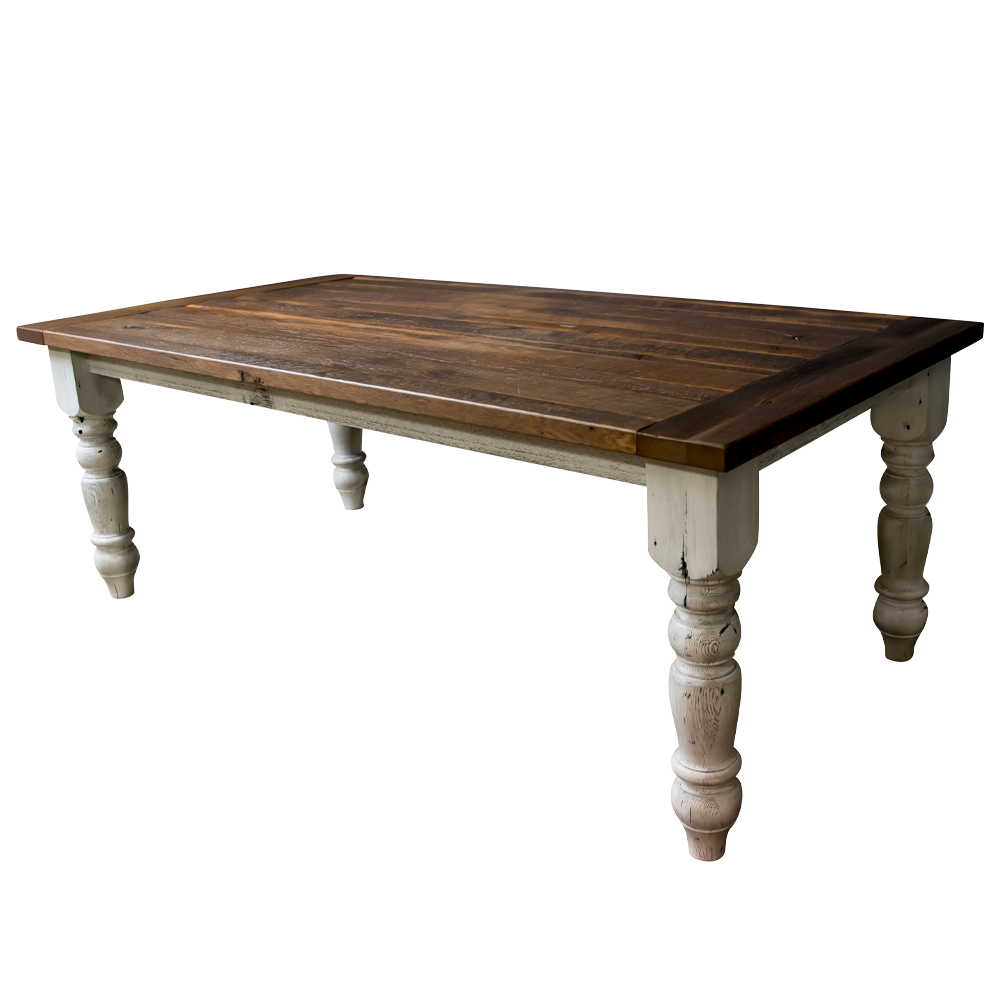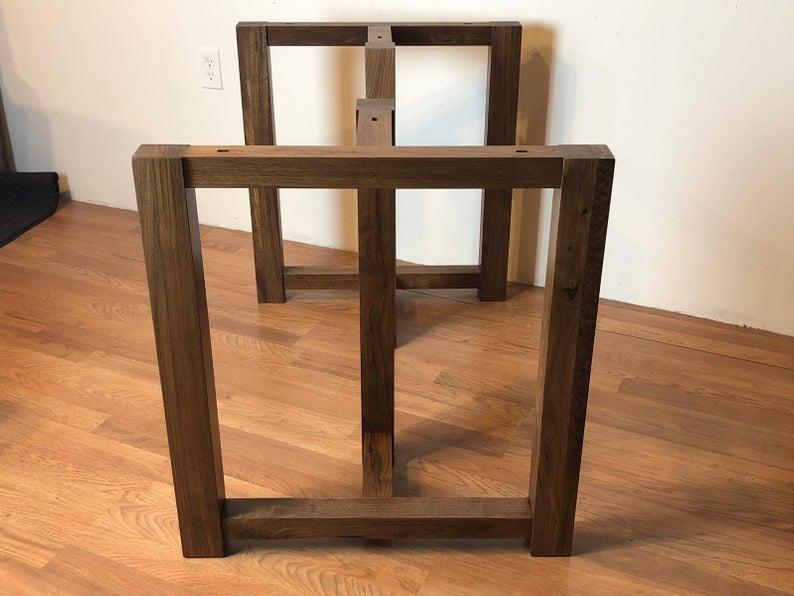Create Spectacular Furniture with Elegant Dining Table Legs Wood Choices
Create Spectacular Furniture with Elegant Dining Table Legs Wood Choices
Blog Article
Checking Out the Different Kinds of Eating Table Legs Timber for Your Eating Area
The selection of dining table legs wood can greatly affect both the practical and aesthetic top qualities of your eating room. Solid timber alternatives, such as oak and walnut, offer a timeless appearance with unparalleled sturdiness, while crafted timber options supply innovative styles that simulate the splendor of all-natural grains.
Strong Timber Options

Unlike crafted products, solid timber is less susceptible to bending and damage over time when appropriately preserved. Each piece of solid timber is special, showcasing specific characteristics that add to the charm and character of the dining table.
Additionally, strong timber can be ended up in countless methods, ranging from all-natural oils to discolored coatings, permitting homeowners to personalize their furniture to match their decor. In recap, picking strong timber for eating table legs not just ensures architectural stability however likewise improves the visual charm of the dining area, making it a beneficial investment for any type of home.
Engineered Timber Alternatives

Plywood, constructed from multiple layers of timber veneer, is especially solid and secure, making it an outstanding choice for eating table legs. Its layered composition allows it to hold up against adjustments in moisture and temperature better than typical solid timber. MDF, on the various other hand, uses a smooth surface for paint or veneering, allowing designers to attain a refined look while keeping architectural integrity.
Particleboard, often made use of in economical alternatives, offers decent toughness and is lightweight, making it less complicated to manage. Nonetheless, it may not be as durable as plywood or MDF. It is essential to think about the designated usage and wanted aesthetic when picking engineered wood choices. These materials not only boost the capability of eating rooms yet also permit better layout versatility, guaranteeing that traditional and contemporary styles can coexist harmoniously.
Reclaimed Wood Features
Reclaimed wood provides an unique blend of sustainability and character, making it an increasingly popular choice for dining table legs. Sourced from old barns, manufacturing facilities, and various other frameworks, redeemed timber symbolizes a background that brand-new materials simply can not replicate. Each piece carries its own tale, marked by distinctive blemishes, knots, and differing grain patterns, which add to a table's distinct aesthetic appeal.
Along with its aesthetic beauty, redeemed timber is an eco-friendly choice. By repurposing previously used products, it lowers the demand for new lumber, hence aiding to decrease and save forests waste. This straightens with an expanding customer preference for lasting techniques in decor.
In addition, recovered timber is often much more durable than freshly gathered wood because of its age. The all-natural drying out process that redeemed wood undergoes lead to a denser and stronger material, making it less prone to warping and splitting. This boosts the longevity of eating tables, permitting them to hold up against the rigors of daily usage.
Softwood vs. Hardwood
When picking table legs, understanding the distinctions in between softwood and hardwood is critical for accomplishing both aesthetic and functional objectives. Softwoods, originated from coniferous trees, such as ache and cedar, are characterized by their lighter weight and simplicity of control. They typically display a more rustic look, making them suitable for country-style or informal dining rooms. However, softwoods are typically much less durable than hardwoods, which can be a factor to consider for family members or those seeking durability in their furnishings.
On the other hand, hardwoods, sourced from deciduous trees like cherry, oak, and maple, are renowned for their density, strength, and sturdiness. The intricate grain patterns and rich colors of hardwoods offer a advanced and classic charm, making them excellent for official eating setups. While woods often tend to be extra pricey and heavier, their strength versus deterioration frequently validates the investment.
Ultimately, the option in between softwood and hardwood for dining table legs need to align with your design vision, use demands, and budget plan, making certain that your eating space reflects your individual style while remaining functional over time.

Surfaces and Treatments
The aesthetic allure and longevity of table legs can be considerably improved via numerous finishes and treatments. These procedures not just protect the wood from damage but likewise boost its look, allowing it to enhance varied indoor designs.
One usual therapy is discoloring, which his comment is here passes through the wood and boosts its all-natural grain while including shade. Stains supply an abundant, stylish appearance, making it possible for home owners to match their furniture with existing design. Alternatively, clear coatings such as polyurethane or varnish create a safety layer without altering the timber's original hue, ensuring durability versus wear and tear.
In addition, all-natural oils, like tung or linseed oil, nourish the timber and offer a refined shine, all while being environmentally friendly. These oils allow the surface area to breathe, preventing dampness build-up and prospective bending.
For those seeking a rustic beauty, troubled or weathered finishes can be put on produce an aged appearance, adding personality to the item. Ultimately, the choice of coatings and treatments relies on personal choice, preferred aesthetic appeals, and the particular timber kind, making it necessary to consider these aspects when selecting table legs for your area.
Verdict
To conclude, the selection of dining table leg products significantly affects both the practical and aesthetic facets of a dining space. Strong woods, engineered choices, and recovered choices each offer unique benefits, satisfying numerous choices and needs. Comprehending the differences between hardwoods and softwoods, along with proper coatings and therapies, enables informed decision-making. Inevitably, the option of wood type must straighten with wanted design, toughness, and environmental considerations, enhancing the general eating experience.
The choice of eating table legs wood can exceptionally affect both the visual and practical qualities of your dining space - Dining Table Legs Wood. Strong wood options, look at this site such as oak and walnut, supply a timeless appearance with unrivaled sturdiness, while engineered timber choices supply cutting-edge layouts that imitate the richness of all-natural grains. Strong timber offers a classic top quality that can raise the general style of a dining room. Each Get More Information piece of strong timber is distinct, showcasing individual features that add to the charm and personality of the eating table
Additionally, reclaimed timber is commonly a lot more sturdy than newly gathered wood due to its age.
Report this page